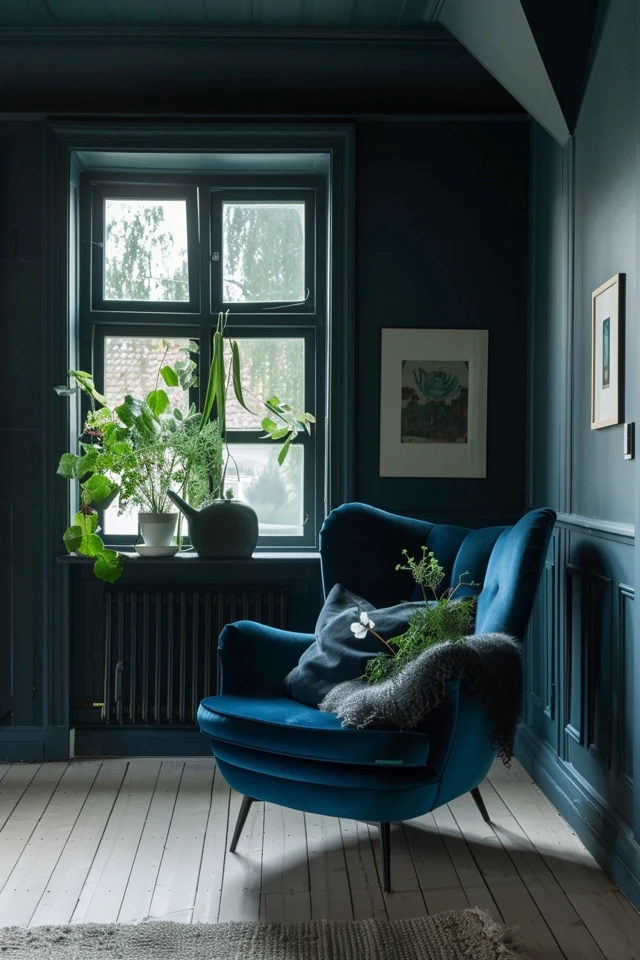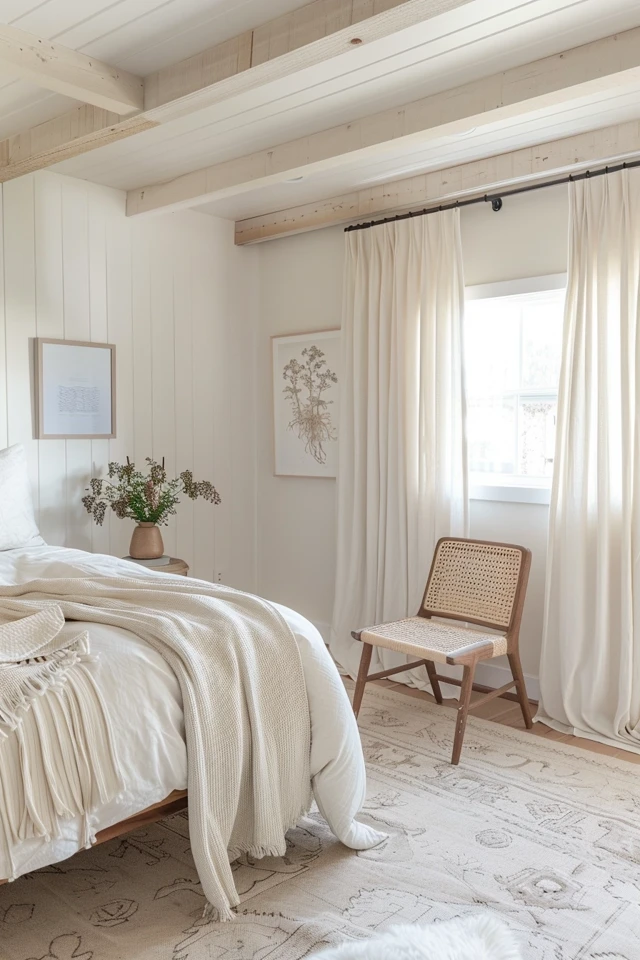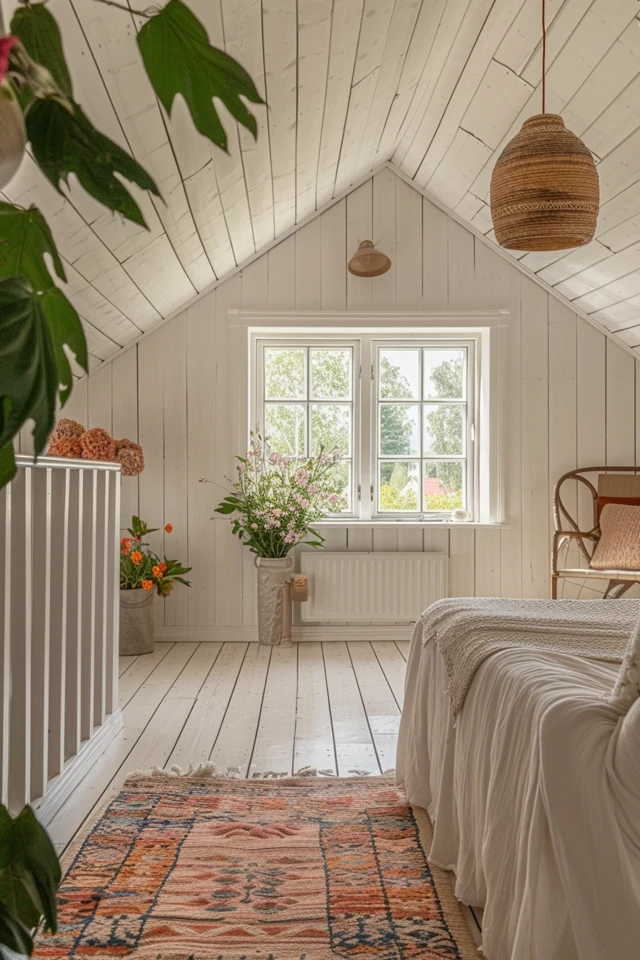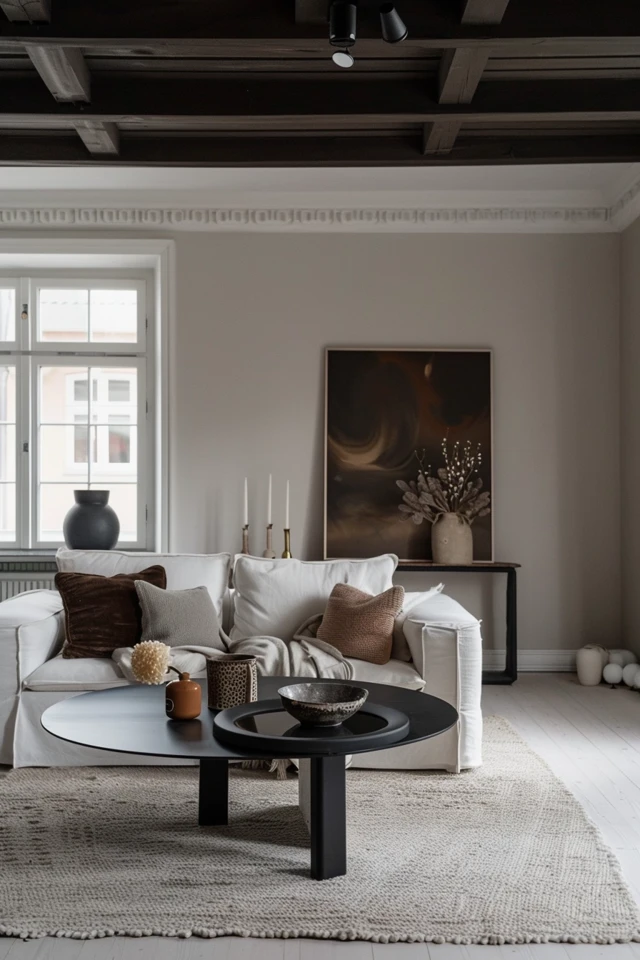Looking to elevate your home with traditional ceiling design? Here are some tips that can help. By following these, you can give your space a classic and elegant look. Let’s dive into ideas that will refresh your ceilings.
Using Wallpaper on the Ceiling
Wallpaper can dramatically change your ceiling. It lets you play with patterns and textures above. You can choose from subtle textures to bold patterns. Traditional wallpaper is best for this, offering more options than peel-and-stick varieties. The right wallpaper pattern can turn your ceiling into a stunning centerpiece.
Painting the Ceiling
Paint offers an affordable way to update your ceiling. Dark colors, such as charcoal, can make it seem higher and add a moodier feel. Lighter shades, however, make the space bright and look bigger. Trying different colors can give your room a cozy depth. Don’t be afraid to use dark shades for a unique, inviting atmosphere.

Adding Exposed Beams or Wooden Planks
Exposed beams or wooden planks bring rustic charm to your home. They enhance the room’s height and architectural beauty. Adding these, whether your ceilings are high or not, creates an illusion of grandeur and warmth. This feature brings outdoor elements inside, adding character to traditional interiors.
Installing Tin Ceiling Tiles
Tin ceiling tiles can add a vintage or loft-like feel. First used in the 1880s, these tiles have many design choices. You can choose ornate or graphic patterns. Tin tiles create an eye-catching effect, making the ceiling stand out. They offer a nostalgic charm to traditional designs.
Incorporating Crown Molding
Crown molding adds sophistication, making rooms seem taller. It comes in various materials, like polyurethane and wood, providing both style and durability. This blend of traditional elegance and modern design completes any room. Adding crown molding creates a refined atmosphere that fits various styles.
Key Takeaways:
- Wallpaper is a versatile and stylish option for incorporating patterns and textures on the ceiling.
- Changing the color of the ceiling can drastically transform the atmosphere of a room.
- Exposed wooden beams or planks add rustic charm and architectural interest to any space.
- Tin ceiling tiles provide a vintage or loft-like feel, allowing you to add personality to the room.
- Crown molding draws the eye up and adds a touch of elegance, making the room appear taller and more refined.

Using Wallpaper on the Ceiling
Wallpaper isn’t just for walls anymore. It can also make your ceiling stand out, adding a unique touch. By choosing wallpaper for your ceiling, you enter a world of endless pattern, color, and texture possibilities.
Adding ceiling wallpaper can make a room feel bigger. It’s best to pick light colors and metallics for small rooms. These shades help reflect light, making the room feel open and bright.
When picking wallpaper patterns for the ceiling, don’t be afraid to show off your style. The ceiling is a great place to make a statement. Pick patterns that make the room feel bigger. Also, think about how the patterns work with the space’s shape.
Choosing the right pattern size is key. Big patterns make a bold statement. Small ones add a delicate touch. Pick a pattern that either matches or contrasts with your walls for a unified look.
Colors between the ceiling and walls should work together well. This ensures the room looks good as a whole. A well-coordinated color scheme creates a welcoming space.
Wallpaper can also cover ceiling flaws. It’s great for hiding cracks or stains, giving you a perfect-looking ceiling.
To make the room feel together, continue the wall pattern onto the ceiling. This creates a striking effect and a sense of unity.
Wallpapering the ceiling is a beautiful idea but can be tricky. It often takes 5 to 6 hours because of the detailed work involved.
“Wallpapering a ceiling can be a bit more challenging than wallpapering a wall due to the vertical surface and the overhead positioning. It requires proper planning and patience.”
It’s best to let professionals install ceiling wallpaper. The cost is usually about the same as the wallpaper price. If the wallpaper costs $300, expect to pay another $300 for installation.
When buying wallpaper for your ceiling, measure carefully. You’ll need enough for the entire space. For example, Relativity Textiles sells wallpaper in double rolls. A 7 feet by 10 feet ceiling needs about two rolls.
Use a special primer for better wallpaper stick. This primer makes sure the wallpaper sticks well to the ceiling.
Wallpapering a ceiling is easier with three people. One person applies the wallpaper, the second helps smooth it out, and the third aligns it. This makes the work efficient and exact.
The “paste the paper” technique is good for ceilings. It involves folding the wallpaper before putting it up. Following the right steps for preparing and applying the wallpaper ensures a professional look.
Always ask the wallpaper maker for tips and guidance. They can offer advice specific to their product for the best results.
Painting the Ceiling
Changing your ceiling color is an easy way to refresh your space. High-quality paint means you might need only two coats. This saves you time and effort. When choosing colors, think about contrasting with your walls. A light color creates bold contrast while a dark shade can make the ceiling look higher.
Different finishes can add depth to your room. For instance, try a high-gloss finish against matte walls. It creates an interesting look. You can really change the vibe of your room this way.
Preparation is key when painting ceilings. Clear the room and remove any fixtures. Use spackle for holes and protect furniture with cloths. A clean, prepared surface means a smooth finish.
For easier and faster painting, tools like the HomeRight QuickPainter Edge Painter and PaintStick EZ Twist are recommended. They minimize discomfort and make the task efficient and enjoyable.
Good tools and materials help you paint faster and better. Using premium paint brands is also beneficial. Textured ceilings often need a second coat for full coverage. Quality paint means fewer coats are necessary.
Here are extra tips for ceiling painting:
- Overlap drop cloths by at least 12 inches for full protection.
- Use 2-inch painter’s tape to protect the tops of walls or crown molding.
- Sand untextured ceilings with 100-grit drywall sanding paper for better paint bonding.
- Use latex paint primer on ceilings to cover stains or improve paint adhesion.
- Choose the right roller nap size based on your ceiling’s texture.
- Paint in small sections to ensure even coverage.
- A second coat might be needed for lighter colors to pop.
- Always start with the ceiling before painting walls.
- Consider hiring professionals for very high ceilings, like in cathedrals.
Think of the ceiling as the “fifth wall.” Pay attention when painting it. Be careful with textured ceilings to avoid flaking. Feather out paint at the edges to avoid lap marks. Use a putty knife for clean lines on rough textures.
Safety first when painting ceilings. Wear eye protection and a cap. Use an extension pole for high areas. Choose the right primer for stains—shellac-based for smoke and oil-based for water stains.
After the paint dries, remove the painter’s tape. Make sure to reattach any ceiling light fixtures. Clean your tools well afterwards.

Adding Beams, Planks, and Crown Molding
Adding wooden beams, planks, tin ceiling tiles, and crown molding brings traditional charm to ceilings. These features boost the room’s look and add depth to its design. They are timeless and bring character to any space.
Wooden Beams
Wooden beams give a rustic, elegant touch, making rooms warm and inviting. They draw the eye upward, making the space seem larger. With various styles available, wooden beams fit many design tastes.
Wooden Planks
Wooden planks on ceilings add a custom look. They can go up horizontally or vertically, changing the space’s vibe. You can choose from wide or narrow planks to match your style.
Tin Ceiling Tiles
Tin ceiling tiles add a vintage or loft feel. They come in many styles, making any room stand out. These tiles are easy to install and mix well with modern designs, adding character and a sense of history.
Crown Molding
Crown molding adds elegance, making rooms look taller and more refined. With many styles available, it brings a luxury touch and completes a room’s design. It helps to find the perfect match for your space.
Using wooden beams, planks, tin tiles, and crown molding can make your space timeless and warm. These elements boost the room’s appeal and make it welcoming. They transform your space into something special.
Conclusion
By using traditional ceiling design tips, you can transform your space. These tips help create a classic and elegant aesthetic. You have many options like wallpaper, painting the ceiling, adding beams or crown molding, or installing tin ceiling tiles.
These tips let you mix traditional beauty with modern flair. You’ll turn your space into a stunning, ageless haven.

